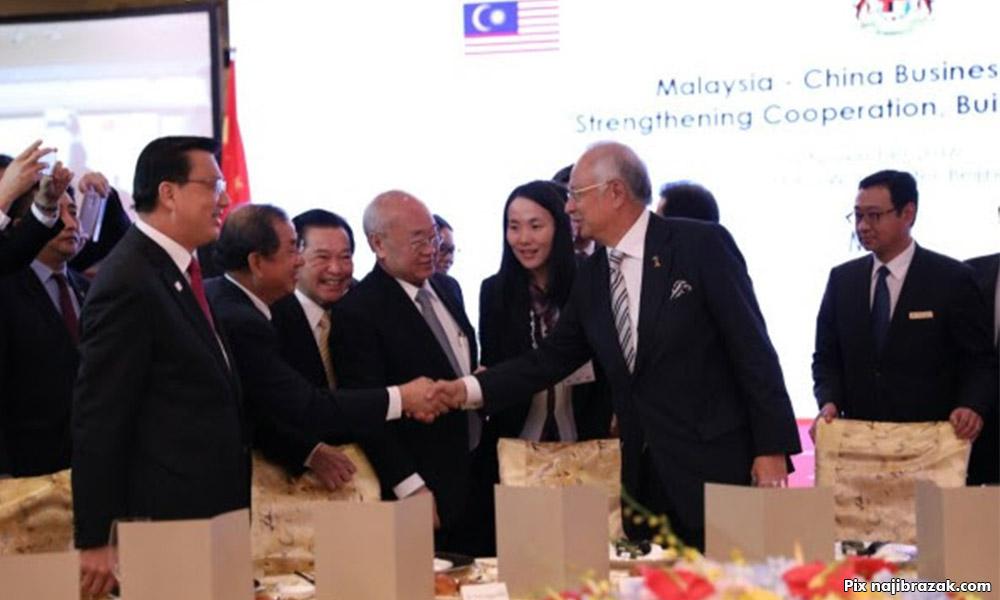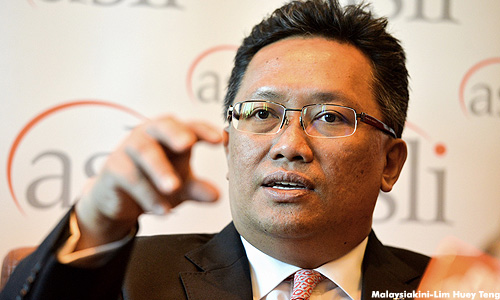COMMENT I refer to the recent interest on the East Coast Rail Line (ECRL) project, which is part of the RM144 billion worth of investments and partnerships signed during the recent historic official visit to China by the Malaysian delegation led by our prime minister.
There are some quarters who have implied that the government is hasty in its decision to commit to this project.
However, those familiar with this project would know that the East Coast Economic Region Development Council (ECERDC) had proposed this ECRL since the year 2007 as a critical project to stimulate economic growth in this corridor, where initial cost estimates had ranged from RM30 billion to RM70 billion then.
In fact, this project has been periodically discussed and at various stages of planning since 1981.
Since its initial proposal, extensive planning, financial modelling, market sensing exercises and studies had been done, including three feasibility studies since 2007.
The arrangement with the government of China will involve a financial framework arrangement of up to RM55 billion, based on very favourable terms to Malaysia - and is via a 20-year low-interest soft loan by the Export-Import Bank of China (Exim) and a bond raising exercise. During the first seven years of the project, there will be no principal repayments necessary.
It was also agreed that China's largest construction company, the state-owned China Communications Construction Co (CCCC) will build the ECRL.
CCCC has a good track record
CCCC has a good track record in construction projects in Malaysia, including the successful completion of the Sultan Abdul Halim Muadzam Shah Bridge in 2014 and the ongoing RM2.3 billion STP2 land reclamation project by a joint-venture company partly-owned by the Penang Development Corporation.
The 688km-long rail project will connect Port Klang to Gombak and to Tumpat in Kelantan, and it will cut through Peninsular Malaysia’s major Titiwangsa mountain range. It will have several spur lines connecting the main line to nearby ports, such as Kemaman and Kuantan.
The ECRL is expected to take seven years for completion of all phases of this project.
The cost of up to RM55 billion is not solely for the cost of construction for the railway track alone.
In a green-field rail project of this nature, other costs such as engineering studies for design speed, topography, geological conditions will be required.
As part of the arrangement, CCCC will be required to engage local companies, where possible, to deliver the project and will include technology transfer to local partners and to the rail operations company. This will be incorproated in the final agreement.
 It is important to know that the ownership, management and operations of the ECRL will be fully in Malaysian hands. Hence, the allegation of Malaysia losing its sovereignty does not arise at all.
It is important to know that the ownership, management and operations of the ECRL will be fully in Malaysian hands. Hence, the allegation of Malaysia losing its sovereignty does not arise at all.
Every rail project has its own unique cost structure due to differing geographical conditions and infrastructure requirements. Therefore, rail projects are not easily comparable and can differ considerably across projects.
For example, the Bremmer rail project in Switzerland cost US$11.9 billion for 57km length, which means a cost per kilometre of US$209 million.
The rail line for Madrid-Volladoid, Spain, cost US$5.48b for 177km, which worked out to about US$30 million per kilometre.
Another rail project in Barcelona, Spain, costs about US$8.12 billion for 48km or US$170 million per kilometre.
ECRL will cost RM55 billion for 688km long or RM80 million or US$19 million per kilometre.
ECRL has unique and complex challenges
Due to Malaysia's topology and the optimum line alignment, the construction of the ECRL has its own unique and complex challenges, including hard rock tunnelling and the building of bridges that span the Tititwangsa mountain range and across dense jungle regions.
Such challenges will also include building 110km in total length in multiple bridges and a total length of 50km of multiple tunnels across the Titiwangsa range.
It is expected that this project will rank as among the most challenging engineering and construction projects in Malaysia to date.
We also note that the Land Public Transport Commission (SPAD) has conducted a market sensing exercise through an open Request for Information (RFI) in March this year, which received responses from 27 groups from five different countries - including Korea, China, Australia, the United States and Europe.
Through this exercise, the technical specifications and the indicative costs were determined.
The eastern corridor of Peninsular Malaysia has traditionally lagged behind the West Coast. Due to this, the ECRL project will have a larger economic multiplier effect that will accelerate economic growth and give greater spill over effects to Malaysia.
The ECRL has a big potential to unlock value for cities along the alignment, boosting tourism and industrial activities.
A rail link which will finally connect ports on the East Coast with Malaysia's largest port in Port Klang on the West Coast will be a game-changer and offer unique logistic and transportation advantages. This is the vision of the prime minister for the rakyat in the East Coast states of peninsular Malaysia.
Development of these new growth areas in Malaysia's eastern corridor will help increase income levels and uplift the standard of living in these areas in order to narrow the development gap with the western corridor of Peninsular Malaysia.
The ECRL project will act as stimulus for the construction sector and when completed, it will form part of the Pan-Asia railway network that will boost connectivity with Asean, Asian and European countries that will greatly boost international trade for Malaysia.
Our studies show that this ECRL project will contribute as much as an additional 1.5 percent GDP annual growth on average to the East Coast Region over the next 50 years, where the main beneficiaries would be the rural and semi-rural rakyat of the East Coast states.
Due to its many economic and development benefits, the government will ensure that this project will be successfully implemented as one of the key initiatives by the prime minister towards a balanced, developed and high-income Malaysia.
ABDUL RAHMAN DAHLAN is Minister in the Prime Minister's Department in charge of the Economic Planning Unit.





